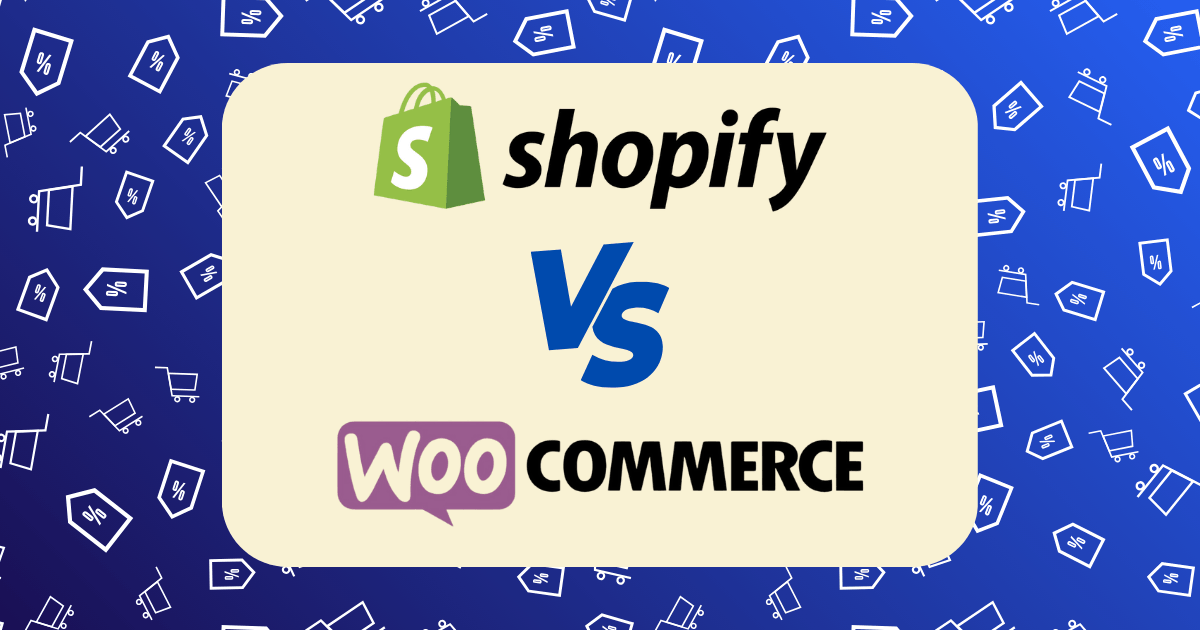Fulfillment Automation: Setting Up Systems That Let You Process 100+ Orders Daily

When my ecommerce business hit 30 orders per day, fulfillment became a breaking point. What once took an hour was consuming half my workday, error rates were climbing, and customer complaints about shipping delays were increasing. I faced a critical decision: hire staff, outsource to a 3PL, or automate my fulfillment process.
After evaluating all options, I implemented a systematic automation approach that transformed my operation. Within 60 days, I could process 100+ orders daily with just 2 hours of hands-on work, reduced shipping errors by 93%, and cut fulfillment costs by 42% per order. Three years later, this same system (with incremental improvements) handles over 300 orders daily with remarkable efficiency.
This post outlines the exact fulfillment automation framework I developed—from software selection to warehouse organization—with implementation steps scaled for different business stages. Whether you’re currently processing 10 orders or aiming to scale beyond 500, these principles will help you build a fulfillment system that grows with your business.
The Four Pillars of Fulfillment Automation
After analyzing dozens of ecommerce operations and refining my own system through trial and error, I’ve identified four fundamental pillars that support efficient order processing at scale:
1. Integrated Software Ecosystem
The foundation of fulfillment automation is a seamlessly integrated software ecosystem that eliminates manual data entry and enables information to flow automatically between systems.
According to Shopify’s research, automated order fulfillment eliminates manual data entry, saving time and improving reliability. This integration typically involves:
- Ecommerce Platform: Where orders originate
- Order Management System (OMS): Centralizes and routes orders
- Inventory Management System (IMS): Tracks stock levels across locations
- Warehouse Management System (WMS): Optimizes picking and packing
- Shipping Software: Generates labels and tracks shipments
The key is ensuring these systems communicate seamlessly, creating a continuous flow of information from order placement to delivery.
2. Optimized Physical Workspace
Even with perfect software, physical inefficiency will limit your throughput. The second pillar focuses on organizing your fulfillment space for maximum efficiency:
- Strategic Inventory Placement: Position high-velocity SKUs in easily accessible locations
- Dedicated Workstations: Create purpose-built stations for specific fulfillment tasks
- Clear Traffic Flows: Design pathways that minimize walking distance and cross-traffic
- Visual Management: Implement clear signage and color-coding for rapid identification
- Ergonomic Considerations: Set up workstations to minimize physical strain and maximize productivity
Research from AutoStore indicates that optimized physical spaces can reduce order processing times by up to 40% even before implementing advanced automation.
3. Standardized Processes
Consistency is the foundation of scalability. The third pillar involves creating standardized processes that can be easily taught, measured, and improved:
- Written Standard Operating Procedures (SOPs): Document every fulfillment process step-by-step
- Process Checklists: Create visual checklists for complex procedures
- Quality Control Protocols: Implement verification steps at critical points
- Exception Handling Procedures: Document how to handle non-standard situations
- Continuous Improvement Mechanisms: Establish systems for identifying and implementing process enhancements
According to Flow Space, standardized processes significantly impact customer loyalty, as 70% of shoppers will abandon a brand after just two negative experiences.
4. Appropriate Automation Technology
The fourth pillar involves selecting and implementing automation technologies appropriate for your business stage:
- Early Stage (10-50 orders/day): Software automation with minimal hardware
- Growth Stage (50-200 orders/day): Semi-automated systems with basic hardware assistance
- Scaling Stage (200+ orders/day): Advanced automation with specialized hardware solutions
The key is implementing automation that delivers ROI at your current volume while providing a pathway to scale as your business grows.
The Fulfillment Automation Implementation Roadmap
With the four pillars established, let’s explore a phased implementation approach that has proven successful across multiple ecommerce businesses:
Phase 1: Software Integration Foundation (Weeks 1-2)
The first phase focuses on establishing the software ecosystem that will power your fulfillment automation:
Step 1: Select and Integrate Your Core Systems
- Order Management System:
- Recommended: ShipStation ($79-$159/month) or Ordoro ($59-$499/month)
- Integration Points: Your ecommerce platform(s), marketplace(s), and shipping carriers
- Implementation Time: 2-3 days
- Inventory Management System:
- Recommended: Cin7 ($299+/month) or Zoho Inventory ($59-$239/month)
- Integration Points: Your ecommerce platform(s), order management system, and accounting software
- Implementation Time: 3-5 days
- Shipping Software:
- Recommended: ShipStation (if not using as OMS), ShippingEasy ($29-$159/month), or carrier-specific solutions
- Integration Points: Your order management system and shipping carriers
- Implementation Time: 1-2 days
Step 2: Configure Automated Workflows
Once your systems are integrated, configure automated workflows that eliminate manual intervention:
- Order Import Automation:
- Set up automatic order imports from all sales channels every 15-30 minutes
- Configure order tagging based on characteristics (e.g., priority, special handling)
- Implement automatic order routing based on inventory location and order type
- Inventory Sync Automation:
- Establish bidirectional inventory updates between systems
- Configure low stock alerts and automatic purchase order creation
- Set up buffer stock levels to prevent overselling
- Shipping Rule Automation:
- Create business rules for carrier selection based on cost, delivery time, and package characteristics
- Set up automatic shipping insurance for high-value orders
- Configure branded tracking notifications to enhance customer experience
Step 3: Document and Test the Software Ecosystem
Before moving to physical implementation:
- Create a comprehensive system map documenting all integrations
- Develop troubleshooting guides for common integration issues
- Conduct thorough testing with sample orders across all sales channels
- Establish monitoring protocols to quickly identify and resolve system failures
Phase 2: Physical Workspace Optimization (Weeks 3-4)
With your software foundation in place, the next phase focuses on optimizing your physical fulfillment space:
Step 1: Inventory Organization and Storage
- Conduct ABC Analysis to categorize products:
- A Items: High-volume products (top 20% by order frequency)
- B Items: Medium-volume products (middle 30% by order frequency)
- C Items: Low-volume products (bottom 50% by order frequency)
- Implement Strategic Storage Solutions:
- A Items: Position at waist height in prime picking locations
- B Items: Store in secondary access areas
- C Items: Place in bulk storage areas
- Use clear bin labeling with large, scannable barcodes
- Establish Inventory Zones based on:
- Product size and weight
- Special handling requirements (fragile, temperature-sensitive)
- Picking frequency and common product combinations
Step 2: Workstation Design and Layout
- Create Dedicated Functional Areas:
- Receiving and inventory processing zone
- Picking zone with optimized product placement
- Packing stations with all necessary materials within arm’s reach
- Quality control checkpoint
- Shipping label application and outbound staging area
- Implement Ergonomic Workstation Design:
- Adjustable height work surfaces
- Anti-fatigue mats in standing areas
- Proper lighting for accuracy and reduced eye strain
- Tool organization systems (e.g., French cleats or pegboards)
- Establish Visual Management Systems:
- Color-coded zones and product categories
- Clear signage and wayfinding
- Status indicators for workstation availability
- Performance dashboards displaying daily goals and progress
Step 3: Traffic Flow Optimization
- Map and Measure Current Movement Patterns
- Redesign Layout to Minimize Walking Distance
- Implement One-Way Traffic Flows Where Possible
- Position High-Volume Items to Minimize Travel Distance
According to Hopstack’s analysis, optimized warehouse layouts can reduce picking times by up to 30% and significantly decrease fulfillment errors.
Phase 3: Process Standardization and Documentation (Week 5)
With your software and physical space optimized, the next phase focuses on creating standardized processes:
Step 1: Develop Standard Operating Procedures (SOPs)
Create detailed SOPs for each fulfillment process:
- Receiving and Inventory Processing:
- Shipment verification against purchase orders
- Quality inspection protocols
- Inventory system update procedures
- Product labeling and storage guidelines
- Order Picking Process:
- Batch picking procedures for multi-order efficiency
- Pick verification methods
- Exception handling for out-of-stock items
- Order staging protocols
- Packing Procedures:
- Package selection guidelines
- Product protection standards
- Packing materials optimization
- Order accuracy verification
- Shipping and Dispatch:
- Label generation and application
- Carrier-specific requirements
- Special handling instructions
- Outbound quality control checks
Step 2: Create Visual Process Guides
Transform written SOPs into visual guides:
- Process Flow Charts showing the sequence of activities
- Visual Work Instructions with photos of each step
- Quick Reference Guides for common scenarios
- Troubleshooting Decision Trees for handling exceptions
Step 3: Implement Quality Control Systems
Establish verification systems at critical points:
- Barcode Scanning to verify correct product picking
- Weight-Based Verification to ensure order completeness
- Photo Documentation of packed orders before sealing
- Random Quality Audits to identify systemic issues
Phase 4: Automation Technology Implementation (Weeks 6-8)
The final phase involves implementing appropriate automation technology based on your order volume:
For Businesses Processing 10-50 Orders Daily:
- Barcode Scanning System:
- Equipment: Wireless barcode scanners ($200-$300 each)
- Software: Integrated with your inventory management system
- Implementation: Configure scan verification at picking and packing stages
- Expected Outcome: 40% reduction in picking errors
- Label Printing Automation:
- Equipment: Thermal label printers ($300-$500 each)
- Software: Integrated with your shipping software
- Implementation: Set up automatic label generation based on order characteristics
- Expected Outcome: 50% reduction in shipping label preparation time
- Packaging Optimization:
- Equipment: Right-sized packaging templates and guides
- Implementation: Create standardized packaging procedures for common order types
- Expected Outcome: 25% reduction in packaging materials cost and time
For Businesses Processing 50-200 Orders Daily:
All previous implementations, plus:
- Mobile Picking Carts:
- Equipment: Custom picking carts with integrated tablet holders and multiple bins ($500-$1,000 each)
- Software: Mobile picking app synchronized with your order management system
- Implementation: Configure batch picking routes optimized for efficiency
- Expected Outcome: 60% increase in picking speed
- Semi-Automated Packaging System:
- Equipment: Package size recommendation system and semi-automated tape dispensers ($1,000-$2,500)
- Implementation: Integrate with your order management system for package recommendation
- Expected Outcome: 40% reduction in packaging time
- Conveyor Systems:
- Equipment: Basic gravity or powered conveyor sections ($2,000-$5,000)
- Implementation: Connect key workstations to minimize manual handling
- Expected Outcome: 30% increase in throughput between stations
For Businesses Processing 200+ Orders Daily:
All previous implementations, plus:
- Pick-to-Light Systems:
- Equipment: Light-directed picking modules ($10,000-$30,000)
- Software: Integrated with your warehouse management system
- Implementation: Install in high-volume picking areas
- Expected Outcome: 70% increase in picking accuracy and speed
- Automated Packaging Systems:
- Equipment: Box erectors and automatic void fill dispensers ($15,000-$40,000)
- Implementation: Integrate with your packing stations
- Expected Outcome: 60% reduction in packing time
- Sortation Systems:
- Equipment: Simple sortation conveyor with destination indicators ($20,000-$50,000)
- Implementation: Configure for carrier and service-level sorting
- Expected Outcome: 80% reduction in shipping sortation time
Key Performance Indicators for Fulfillment Automation
To measure the success of your fulfillment automation implementation, track these critical KPIs:
Efficiency Metrics
- Orders Processed Per Labor Hour: Target >10 for early automation, >25 for advanced systems
- Pick Rate: Items picked per hour (target: 60-100 for basic systems, 200+ for advanced)
- Pack Rate: Orders packed per hour (target: 15-20 for basic systems, 40+ for advanced)
- Total Fulfillment Time: Time from order receipt to shipping (target: <24 hours)
Accuracy Metrics
- Picking Accuracy: Percentage of orders picked correctly (target: >99%)
- Shipping Accuracy: Percentage of orders shipped to correct address with correct service level (target: >99.5%)
- Inventory Accuracy: Percentage match between physical and system inventory (target: >98%)
Cost Metrics
- Cost Per Order: Total fulfillment cost divided by number of orders (target: decreasing trend)
- Labor Cost Percentage: Labor cost as percentage of total fulfillment cost (target: <40%)
- Packaging Cost Per Order: Average packaging material cost per order (target: <5% of average order value)
Customer Experience Metrics
- On-Time Shipping Percentage: Orders shipped by promised date (target: >98%)
- Order Accuracy: Orders delivered without errors (target: >99%)
- Average Shipping Time: Days from order to delivery (target: competitive for your industry)
Case Study: My Fulfillment Automation Journey
To illustrate this framework in action, here’s how I implemented it in my own ecommerce business:
Initial Situation
- Processing 30-40 orders daily
- Fulfillment taking 4-5 hours daily (7-8 minutes per order)
- Error rate of approximately 4% (1 in 25 orders)
- Limited scalability during peak seasons
- Fulfillment cost of approximately $4.20 per order (excluding shipping)
Implementation Approach
Week 1: Software Integration
- Implemented ShipStation for order management and shipping
- Integrated Cin7 for inventory management
- Established automated workflows between Shopify, ShipStation, and Cin7
- Set up automatic label generation and carrier selection rules
Weeks 2-3: Physical Workspace Optimization
- Conducted ABC analysis of 437 SKUs
- Reorganized warehouse with high-velocity items in prime picking locations
- Created three dedicated packing stations with standardized equipment
- Implemented color-coded zones for different product categories
- Established one-way traffic flow through the fulfillment area
Week 4: Process Standardization
- Created detailed SOPs for all fulfillment processes
- Developed visual guides with photos of each step
- Implemented barcode verification at picking and packing stages
- Established daily quality audit of 5% of orders
Weeks 5-8: Technology Implementation
- Deployed wireless barcode scanners for inventory and order verification
- Implemented batch picking with mobile carts and tablet mounts
- Installed thermal label printers at each packing station
- Set up a basic gravity conveyor between picking and packing areas
Results After 90 Days
- Increased capacity to 120+ orders daily
- Reduced fulfillment time to 1.5 hours daily (45 seconds per order)
- Decreased error rate to 0.3% (1 in 333 orders)
- Successfully handled 300+ orders during Black Friday without additional staff
- Reduced fulfillment cost to $2.45 per order (42% reduction)
According to Phase V’s analysis, this level of improvement is consistent with well-implemented automation systems, which typically reduce fulfillment costs by 30-50% while significantly improving accuracy.
Common Challenges and Solutions
Implementing fulfillment automation isn’t without challenges. Here are the most common issues I encountered and how to address them:
Challenge 1: Software Integration Complications
Problem: APIs don’t connect properly or data synchronization issues occur between systems.
Solution:
- Start with native integrations whenever possible
- Use middleware like Zapier or Integromat for custom connections
- Implement regular data reconciliation processes to catch and correct synchronization issues
- Consider hiring an integration specialist for complex multi-system setups
Challenge 2: Resistance to Process Changes
Problem: Team members revert to familiar methods rather than following new procedures.
Solution:
- Involve team members in process design to increase buy-in
- Clearly demonstrate benefits through metrics and time savings
- Provide comprehensive training with hands-on practice
- Remove old tools and materials that enable previous processes
- Recognize and reward adherence to new procedures
Challenge 3: Balancing Automation Investment with ROI
Problem: Determining appropriate automation level without over-investing.
Solution:
- Calculate detailed ROI for each automation component
- Implement in phases with clear success metrics for each stage
- Start with software automation before investing in hardware
- Consider leasing options for expensive equipment
- Build modular systems that can scale with your business
Challenge 4: Maintaining Accuracy During Transition
Problem: Temporary increase in errors during system implementation.
Solution:
- Run parallel systems during initial implementation
- Increase quality control checks during transition periods
- Implement gradual cutover strategies rather than “big bang” approaches
- Create detailed fallback procedures for system failures
- Provide extra training and supervision during early implementation
Scaling Beyond 100 Orders: The Next Steps
Once you’ve successfully implemented the framework and can reliably process 100+ orders daily, consider these next steps for continued scaling:
1. Advanced Inventory Management
- Implement cycle counting instead of periodic full counts
- Deploy inventory forecasting algorithms to optimize purchasing
- Consider distributed inventory across multiple locations for faster delivery
- Implement cross-docking procedures for high-velocity items
2. Workflow Optimization
- Conduct time-motion studies to identify remaining inefficiencies
- Implement wave planning to optimize labor allocation
- Deploy advanced picking strategies (zone picking, cluster picking)
- Consider voice-directed or light-directed picking systems
3. Integration Expansion
- Connect fulfillment systems with customer service platforms
- Implement returns automation and processing
- Develop supplier portals for vendor-managed inventory
- Create customer-facing order tracking and delivery estimation
4. Advanced Automation Consideration
- Evaluate semi-automated storage and retrieval systems
- Consider robotic picking assistance for high-volume products
- Implement automated box sizing and custom packaging systems
- Explore conveyor-based sortation systems for high-volume shipping
Conclusion: The Competitive Advantage of Fulfillment Excellence
In ecommerce, fulfillment excellence has become a critical competitive advantage. Customers increasingly expect Amazon-like delivery speeds and accuracy, regardless of your company’s size. By implementing the fulfillment automation framework outlined in this post, you can:
- Scale your operations without proportional increases in labor
- Improve customer satisfaction through faster, more accurate fulfillment
- Reduce costs and increase margins on every order
- Free up time to focus on growth-oriented activities
- Build a fulfillment operation that becomes a competitive moat
Remember that automation is a journey, not a destination. Start with the foundations, measure your results, and continuously improve your systems. With each incremental enhancement, you’ll build a more efficient, scalable, and profitable fulfillment operation.







